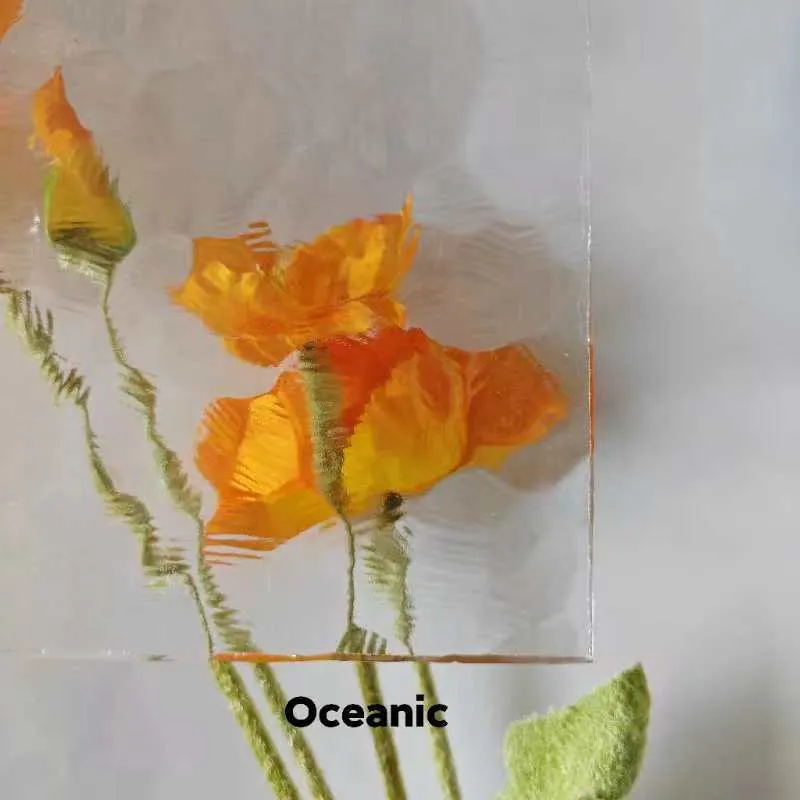

Patterned glass is more than just a decorative element—it’s a fusion of function, privacy, and light play that transforms ordinary spaces into architectural statements. With innovative technologies and expanded design capabilities, today’s patterned glass suppliers are redefining how homeowners, architects, and commercial designers incorporate textured elegance into interiors and exteriors.

Whether it’s the intricate beauty of etched pattern glass or the textured charm of patterned glass for doors, this versatile material continues to gain popularity in contemporary building design.
One of the standout features of patterned glass is its anti-glare capability. Unlike plain transparent panes that reflect harsh light, types of patterned glass are designed with deliberate surface disruptions that scatter light, significantly reducing glare. This feature has been validated through quantitative light diffusion studies, which show that patterned surfaces reduce visual hotspots by dispersing light evenly across the surface.
In corporate environments, where lighting can lead to screen reflections and eye strain, patterned glass for doors or partitions offers a practical yet stylish solution. It softens natural and artificial lighting without compromising brightness, making it a smart choice for both productivity and ambiance.
Accidents happen, and even the most durable patterned glass may suffer cracks or breaks due to unforeseen impact. In these situations, a fast and reliable emergency response is critical—not only for safety but also for maintaining visual integrity. Professional glaziers typically recommend temporary film patching to prevent sharp edges from causing harm, followed by swift replacement using the same types of patterned glass to ensure design consistency.
When damage occurs to large panels, patterned glass suppliers with responsive logistics can quickly source matching styles—especially for popular models of etched pattern glass used in high-end interiors. This ensures rapid restoration and continuity in design aesthetics, even during unexpected breakdowns.
The beautiful textures that make patterned glass unique can sometimes trap dirt or soap scum, especially in bathrooms or kitchens. Cleaning these grooves requires more than a surface wipe. Experts recommend using a soft-bristled brush paired with a non-abrasive cleaner to gently dislodge particles from etched areas.
Steam cleaners have also become a preferred method for deep-cleaning etched pattern glass, as they can reach into fine grooves without scratching or damaging the surface. For busy commercial spaces, a professional maintenance plan tailored to your patterned glass for doors or windows can ensure lasting clarity and appeal.
One of the fastest-growing applications of patterned glass is in modern door systems. Whether used as a privacy panel in bathrooms or an accent feature in entryways, patterned glass for doors brings elegance and texture without compromising light flow. Popular choices include floral motifs, geometric grids, and subtle waves—all available from leading pattern glass suppliers.
Designers often prefer etched pattern glass for its ability to strike a balance between opacity and translucence. It provides visual interest while still ensuring discretion, making it perfect for conference rooms, dining areas, and even shower enclosures.
With the global surge in sustainable and custom design materials, pattern glass suppliers are embracing more diverse patterns, eco-friendly production methods, and personalization. Clients can now specify not just the texture but also the thickness, tint, and security level of their patterned glass, offering unparalleled creative control.
From classic reeded patterns to bold abstract designs, manufacturers are blending traditional etching techniques with digital imaging to expand the design language of patterned glass. Thanks to this evolution, architects can now source types of patterned glass for any setting—residential, hospitality, healthcare, or commercial—with consistent quality and quick lead times.
Patterned glass features physical textures or patterns on its surface, which not only diffuse light but also add aesthetic depth. Frosted or tinted glass, by contrast, alters light through color or opacity without adding surface variation.
Absolutely. Patterned glass for doors is commonly tempered or laminated for safety and durability, making it suitable for office buildings, hotels, and retail environments where both form and function are essential.
Regular cleaning with soft cloths, non-abrasive cleaners, and gentle brushes will keep etched pattern glass looking fresh. Steam cleaning is also effective for deeper grooves, especially in textured patterns.
Different types of patterned glass include fluted, hammered, ribbed, and geometric textures. Each style varies in opacity, light diffusion, and visual effect, offering a wide range of design choices for different settings.
Most major pattern glass suppliers can deliver standard styles within days and offer custom-etched solutions in just a few weeks, depending on design complexity and quantity.